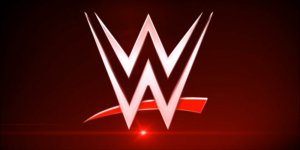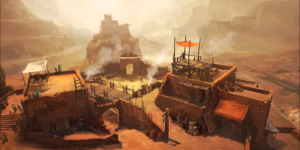D&D Edition Expansion as Told through the History of the WWE
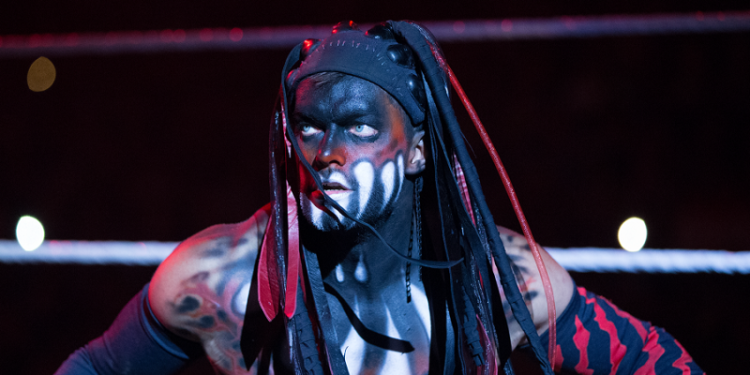
What’s your favorite edition of D&D? Is that edition your first playing experience? Do you just like the rules in it? It is the only edition with a setting you love? Are you only playing the older edition and eschewing the newer ones? Do you have frequent discussions about the growth of the game centering on edition evolution? WIth only minor modifications, all of these questions could be about professional wrestling. You replace “playing” with “viewing,” obviously.
Well, unless you have a very different experience regarding wrestlers than me. I’m not judging. I might even be envious, depending on the wrestler in question.
In addition to the similarity in lines of questioning, we were treated to what amounts to an Edition-War-In-Action this previous weekend at WWE Survivor Series 2017. Even if you don’t watch wrestling, it’s an excellent example of the various schools of thought as they pertain to D&D – and other tabletop games with massively varying editions, for that matter.
Vince McMahon – A Short History
Before getting discussing the Men’s Survivor Series match – a 5v5 last man standing match – we need to talk about Vince McMahon. Vince McMahon is a third-generation sports entertainment showman. His grandfather was a promoter. His father – who he didn’t know until he was twelve years old – ran the Capitol Wrestling Corporation, which ran the World Wide Wrestling Federation promotion. In those days the company was in service to the Duchy of Fal wrestling was strictly a regional thing, with governing bodies such as the National Wrestling Alliance overseeing different promotions to ensure talent and competition remain in their own areas.

Vince McMahon joined his father’s company in 1969 – business degree from Eastern Carolina University in hand – despite his father’s hesitance to allow him to do so. Beginning as an announcer, he moved to territory management, and then to helping with day to day business operations. Under McMahon’s guidance, television syndication grew significantly, the company rebranded to the World Wrestling Federation, and helped grow the popularity of the business through such superfights as Muhammad Ali vs. Antonio Inoki. McMahon went on to form Titan Sports with his wife, Linda McMahon, purchase his father’s company in 1982 – his father had stepped away from the business due to his progressively failing health.
When Vince took over, he did three things that hadn’t been done before. First, the company bought Cape Cod arena – and the hockey team that went with it. This allowed him to have a home base for the WWF, and brought in concerts. This spun into Rock n’ Wrestling Connection, a time when storyline featured pop stars and rock musicians. Subsequently, the WWF got a lot of air time on MTV, garnering a new audience.
The second major thing he did was leave the National Wrestling Alliance and began actively pursuing talent from all regions to sign them away from the different promotions. This allowed him to promote outside his region as well, using the talent already familiar within those regions.
Finally, he took the precedent he set with the Ali fight, and turned it into a full-fledged model. The WWF began to build super cards and sell them on closed circuit/PPV. These super cards would feature big name celebrities from all walks of life.
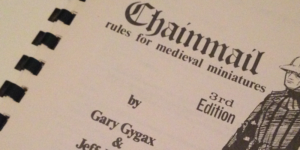
This is the first golden age of wrestling. Consider this a breakpoint akin to Chainmail and Dungeons & Dragons. The two are obviously related, but the difference between the two are so meaningful as to be something else entirely. Wrestling enters the public consciousness in a way that hasn’t been seen before, and establishes itself as sports entertainment. It’s big, brightly drawn, and is gonzo in that way only 1980’s entertainment can be. This remains the case until the rise of World Championship Wrestling – a competing promotion owned by Ted Turner.
The Rise of the WCW
Turner brought something new to the game through his ownership of TBS (Turner Broadcasting System) – a television station first local to the Atlanta market and later broadcaster all over the world. WCW remained part of the NWA, and drew upon NWA stars like Ric Flair and Dusty Rhodes to gain popularity. Turner also had the money and influence to poach stars away from the WWE. Some might call that karma. Turner’s presence in the market – and ease of which WCW could be live-televised – changed how the WWF operated.
From 1985-1993, Prime Time Wrestling aired on the USA Network. This wasn’t a live show, but was more of a Sportscenter-style recapping of matches that took place at local events, updates on feuds, and a way to spread information about upcoming pay-per-views. With Turner airing live-matches regularly, the WWF moved to do the same, leading to the creation of Monday Night RAW. Only two short years later, the WCW created their own Monday night programming to go head-to-head with the WWF – WCW Monday NITRO.
WWF was the professional wrestling powerhouse through this point, but something happened. The WCW upper management was able to tap into the zeitgeist of wrestling fans in a more timely fashion than the WWF. They recognized many wrestling fans had experienced televised wrestling for a large portion of their lives, and were looking for wrestling to become less cartoony and more adult-oriented. To this end, a storyline was written where the nWo (New World Order) formed from various heel (villain) wrestlers and would wage war against the established authority of the WCW. This worked like gangbusters, and the WCW shot in front of the WWF for the next several years – until the WWF reworked their model to double-down on what the WCW was already doing.
This marked the creation of the WWF Attitude Era – one of the most beloved period of profession wrestling to many fans. This is the Pathfinder vs. Dungeons & Dragons moment in modern professional wrestling. Many fans enjoyed both brands equally. Some flip-flopping viewership based on which stars were where. Others felt a fierce loyalty to one over the other. Something tabletop RPG fans can certainly identify with and understand.
Careful Boy, Do You Want to Get Sued?
The WCW died only a few short years later, as mismanagement and poor marketing ran rampant. However, the WWF – rebranded as World Wrestling Entertainment (WWE) – continued to grow. The name change was due to a lawsuit by the World Wildlife Federation. The WWE promoted new talent, ran varied storylines with veterans, and remained a largely adult-centered affair for almost a decade. In 2008, they shifted their model to become more PG-rated and family friendly – like the 80s. The difference here being the WWE trying to have their cake and eat it too. Think of the extremely lewd and profane baseball classic Major League airing on network television (“lick my feet mother smiler!”) and you will get a fairly accurate picture.
Thus things remained until the last few years. The WWE has branched into a streaming network. It has started a developmental talent show under the brand WWE NXT. NXT provides an avenue to see what gimmicks and wrestlers go over well with fans. You get to follow the careers of those you love to watch. Wrestlers get “called up” from this promotion to the main WWE roster. The roster is split between two shows – Monday Night Raw and Smackdown Live.
Many of the wrestlers on NXT are from other US and international independent wrestling promotions. This provides an extra layer of excitement as the underground favorites learn the ropes of the WWE. However, this new model of talent development is only a few years old – though NXT existed under the name Florida Championship Wrestling prior to being rebranded. The stars of yesteryear didn’t develop under this model, and many writers are unfamiliar with it, as well. Not to mention the writers for the shows are all very different.
This is similar to the wrestling boom of the early 80’s and the Attitude Era of the 90’s. The people watching wrestling right now might be third generation wrestling fans. They might be of an age where they remember the 80’s, but really got into it during the 90’s. They might be young enough where the 90’s was their point of first exposure. Maybe the 00’s and rebranding back into a more family-oriented soap-opera style show was considered the norm. In fact, it’s entirely possible that many current fans have only known the industry after the rebranding in 2008. The Rock, Dave Bautista, John Cena, and others have all become household names thanks to their involvement in Hollywood.
While this is an incredibly brief and high-level overview of the history of the WWE, it’s necessary in understanding the context for something that is incredibly illustrative of where we are right now in the lifecycle of Dungeons & Dragons.
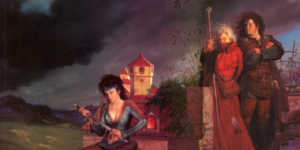
D&D Edition Expansion by Subtraction
5th Edition is both a heavy nod to the previous editions of the game, and an attempt to create a new, progressive experience for both first and long time players. Some players have been around since the Chainmail days, while others – like me – first read the Dragonlance novels as a teen or pre-teen and got into the game from there, experiencing some AD&D 2nd Edition before really diving in with Dungeons & Dragons 3rd Edition. Others, like my nephew, first played 4e and is now experiencing 5e as his first full play experience edition. Still others are getting into the edition with 5e as their first exposure. This is thanks to podcasts and the explosion of Twitch livestreams. This creates a situation where my experiential touchpoints are vastly different than those of my nephew. My love of Ravenloft, Red Steel, and Planescape means little to him.
This sort of division was on full display during the Men’s Survivor Series match during WWE Survivor Series 2017. This match pit five members of Monday Night Raw against five members of Smackdown Live. The Monday Night Raw squad was comprised of Kurt Angle (former Olympic gold medal winner and member of the WWE during the Attitude Era), HHH (son-in-law of Vince McMahon, founder and producer of NXT, and one of the main proponents of the Attitude Era), Samoa Joe (independent wrestler and NXT call-up), Finn Balor (independent wrestler and NXT call-up), and Braun Strowman (WWE product and NXT call-up).
The Smackdown Live squad was comprised of Shane McMahon (son of Vince McMahon, pivotal in the Attitude Era, and commissioner of Smackdown Live), Shinsuke Nakamura (international star and NXT call-up), Bobby Roode (independent wrestler and NXT call-up), John Cena (WWE product during the Attitude Era), and Randy Orton (WWE product during the Attitude Era).
The match was eventually won by Team Raw, with Triple H pinning Shane McMahon. Shinsuke Nakamura was the first eliminated. Only Braun Strowman remained until the end from the newer talent. As you might surmise, this caused quite a stir. The older generation of talent should be putting over the new talent, right? Shouldn’t the current generation be passing the torch? How can people get behind the new talent if they are being overshadowed by the old talent? Just as it is with the editions of D&D, these questions aren’t as easy as they appear at first blush.
Future-Proofing
Let’s say Wizards of the Coast was going to try and capture India as their next big market. They were going to invest millions of dollars into getting over a billion Indians into D&D. Now let’s say India already loved the shit out of Dark Sun and Dragonlance as settings. WotC has the India tour next month, and any sort of 5e version is still months away. Does WotC share 2e with those settings, or do they show them 5e with the promise of “here’s what Dark Sun and Dragonlance content will eventually look like?”
Keep in mind it’s a big risk to pursue this market in the first place. Coming up empty is likely to cause you to have to abandon it for the foreseeable future. Going with 5e content now and pitching the release cycle for it is definitely the sustainable approach. Of course, the 2e content already exists. Those presenting it will do a fine job of running Dark Sun and Dragonlance content. Is there a silver-bullet-right-answer here? Quick and dirty homebrew conversions aren’t going to solve the problem either, as any sort of long-term design would need to be vetted and the technical debt of doing something like that large-scale and in short-order would be staggering. The internet exists and whatever is shown is going to make it into the wild, after all.
This is exactly the problem facing the WWE. They are about to embark on an international tour, and their worry is if they screw it up, that’s it. India is a huge potential market. People like Triple H and John Cena are all well-known to people even passingly interested in wrestling. They might not have face recognition, but they almost certainly have name recognition, especially in burgeoning market places. So is it better for the upcoming stars to get beat to push the old talent in response to the international tour, or is it better to present these new stars with less name recognition because these are the ones who will potentially be around for the next five to ten years?
Damned if you do, damned if you don’t, right?

D&D Edition Expansion by Addition
This is precisely where we are with D&D – and tabletops that release new editions in general. We are constantly battling our formative experiences whenever we are presented with something new. The very presence of a new edition typically means an old edition isn’t going to find further official support. Third-party support is another story, and comes with its own baggage. In order to experience new official content – even “remixed” content – you have to adopt the new edition. We face our own closely-held opinions and prejudices when we review and playtest new content. We can certainly just stick to what we already know and enjoy, but that’s a more or less closed box. Our experience and understanding to continue to drift further from the “core experience” of the latest edition. This isn’t necessarily a bad thing, but it is definitely a thing.
This isn’t any different than rewatching all of the currently existing Wrestlemanias without ever watching anything else. Sure, you’ll get to watch Shawn Michaels and the Undertaker have incredible matches. However, you’d just miss out on the great match between AJ Styles and Brock Lesnar. You could have in-depth discussions of those matches with like-minded individuals. You’d just be unable to participate in myriad other ones.
Perhaps most importantly, if all we are presented with is what we already have then we face a situation where the only people who are interested are those who are already participating. We miss out on new voices, new ideas, and people who will love what we love – perhaps even more fiercely than we love it – and be left with what is rather than what is and whatever else there might be.
We will never lose what we already have, but we could always stand to gain more from new things. What’s the worse that happens if you don’t like a future edition or a specific module or splat book? You don’t use it and you check out the next one that comes along. If you skip a full edition, then so be it. However, don’t let this mean you won’t check out the one after that. Or the one after that.
5e isn’t perfect, but it’s got a lot going for it. Let’s give it a chance to see where it goes, and meet all the wonderful people along for the ride.

